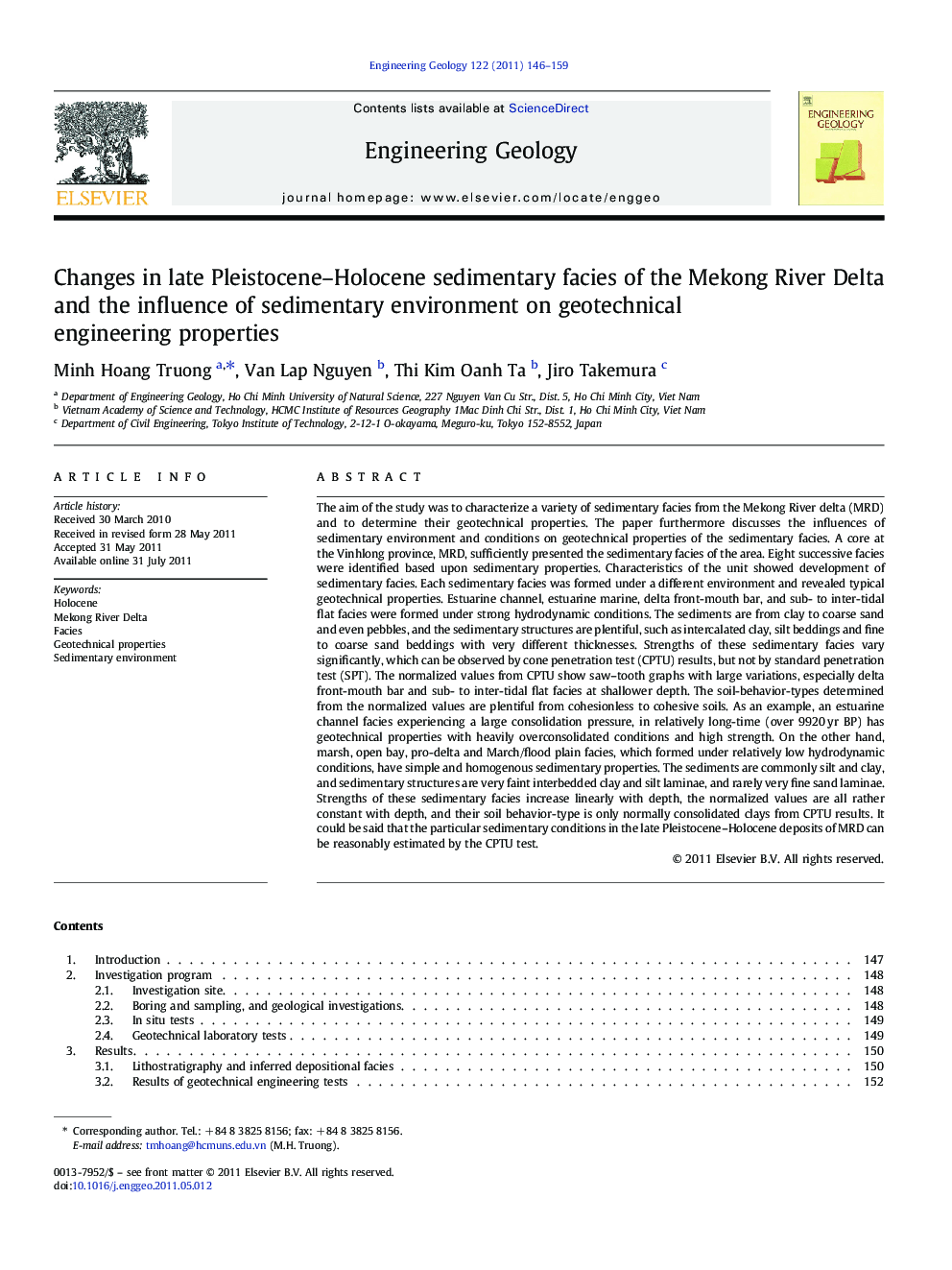| کد مقاله | کد نشریه | سال انتشار | مقاله انگلیسی | نسخه تمام متن |
|---|---|---|---|---|
| 4744245 | 1641850 | 2011 | 14 صفحه PDF | دانلود رایگان |

The aim of the study was to characterize a variety of sedimentary facies from the Mekong River delta (MRD) and to determine their geotechnical properties. The paper furthermore discusses the influences of sedimentary environment and conditions on geotechnical properties of the sedimentary facies. A core at the Vinhlong province, MRD, sufficiently presented the sedimentary facies of the area. Eight successive facies were identified based upon sedimentary properties. Characteristics of the unit showed development of sedimentary facies. Each sedimentary facies was formed under a different environment and revealed typical geotechnical properties. Estuarine channel, estuarine marine, delta front-mouth bar, and sub- to inter-tidal flat facies were formed under strong hydrodynamic conditions. The sediments are from clay to coarse sand and even pebbles, and the sedimentary structures are plentiful, such as intercalated clay, silt beddings and fine to coarse sand beddings with very different thicknesses. Strengths of these sedimentary facies vary significantly, which can be observed by cone penetration test (CPTU) results, but not by standard penetration test (SPT). The normalized values from CPTU show saw–tooth graphs with large variations, especially delta front-mouth bar and sub- to inter-tidal flat facies at shallower depth. The soil-behavior-types determined from the normalized values are plentiful from cohesionless to cohesive soils. As an example, an estuarine channel facies experiencing a large consolidation pressure, in relatively long-time (over 9920 yr BP) has geotechnical properties with heavily overconsolidated conditions and high strength. On the other hand, marsh, open bay, pro-delta and March/flood plain facies, which formed under relatively low hydrodynamic conditions, have simple and homogenous sedimentary properties. The sediments are commonly silt and clay, and sedimentary structures are very faint interbedded clay and silt laminae, and rarely very fine sand laminae. Strengths of these sedimentary facies increase linearly with depth, the normalized values are all rather constant with depth, and their soil behavior-type is only normally consolidated clays from CPTU results. It could be said that the particular sedimentary conditions in the late Pleistocene–Holocene deposits of MRD can be reasonably estimated by the CPTU test.
► In this study we show typical geotechnical properties of each sedimentary facies.
► There is a close relationship between the sedimentary facies and geotechnical properties.
► We study influence of the sedimentary environment on the geotechnical engineering properties.
► Allow the estimation of the general tendencies of the mechanics behavior of soil ground.
► The particular sedimentary conditions can be reasonably estimated by the piezocone penetration test.
Journal: Engineering Geology - Volume 122, Issues 3–4, 10 October 2011, Pages 146–159